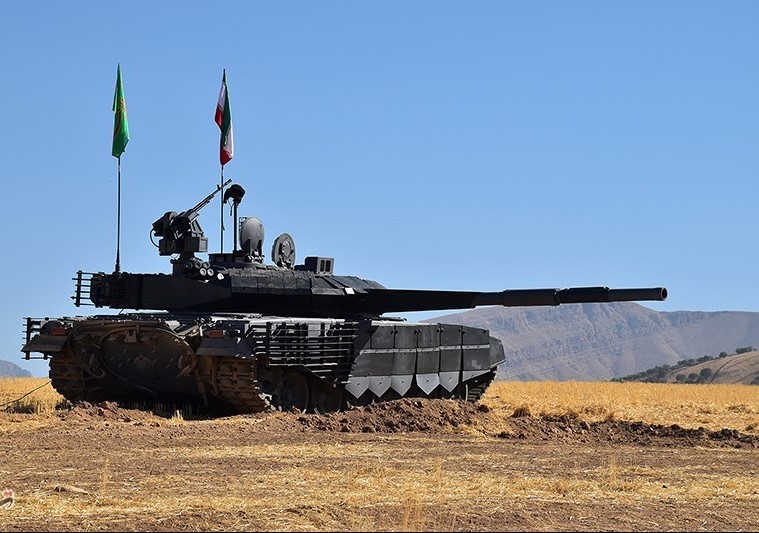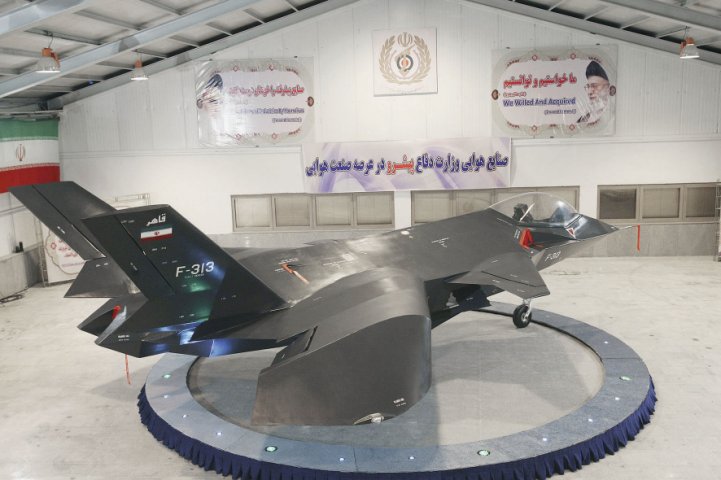Iran belongs to a relatively small group of states with an indigenous defense industry. It serves as an important element of Tehran’s official strategy of economic, military and industrial self-sufficiency. However, this defense industry is largely confined to the modernization of Cold War-era equipment.
Iran’s industrial base was established under Shah Mohammad Reza Pahlavi and later reorganized and enlarged during the Islamic Republic. While, in many countries, defense companies are private, they are state-owned in Iran. Because of the Islamic Republic’s long pariah status, interaction with the outside world has been limited. Currently, Iran can produce various systems domestically and, to a limited extent, modernize and copy by reverse engineering some advanced sub-components, such as engines, electronics, and older types of avionics.
The industry’s greatest achievement has been to repair and overhaul old equipment. The majority of Iran’s military hardware was acquired during the time of the shah or in the 1980s and 1990s. To keep these systems operational has been a truly impressive accomplishment. This includes antiques such as the F-14 twin-engine variable-sweep wing fighter aircraft, known as the Tomcat, and AH-1J assault helicopters—both purchased from the United States in the 1970s. Some spare parts are produced locally, while others are, reportedly, smuggled in from other countries.
Due to logistics shortfalls, an important source of spare parts is cannibalization, which is a process of removing usable parts from other systems, such as tanks and aircraft, to replace broken parts on others instead of using parts from inventory. However, these systems—aircraft, tanks, and armored vehicles—cannot be maintained forever. This particularly applies to Iranian jets, which are in poor condition. Since 2003, at least twenty crashes due to technical failures were reported. Every airframe has a maximum lifespan—at some point irremovable micro cracks appear. Iran’s defense industry has no capability to replace them with modern airframes.
What the Iranian defense industry can do is offer limited modernization of Cold War-era equipment. This includes upgrades of FV101 Scorpion light reconnaissance tanks, M-47/48/60 tanks, and T-54/55 tanks, as well as Type 59 and T-72 tanks. Although some were equipped with slightly newer sub-components, such as the Slovenian Fontana EFCS-3 fire control system or Russian Kontakt reactive armor, none of these vehicles meet the requirements of the twenty-first century battlefield. There are no credible sources to assume that Iran has acquired better smoothbore guns, able to fire a full range of modern ammunition, nor guided missiles. The same applies to vehicles providing support to infantry, such as Ra’ad, a local variation based on the US 155 mm M109A1 self-propelled howitzer, fielded in the early 1960s. Both for offensive and defensive purposes, Iran desperately needs precision-guided munitions, which are a highly advanced technology that its indigenous defense industry has been unable to develop thus far.
Strong limitations of local industry are visible when “new systems” are taken into account. In recent years, Tehran stated numerous times that new, indigenous aircraft were developed. This included jets such as the Azaraksh or Saeghe I/II. Another example is the Kowsar “new domestically built fighter jet.” This aircraft, presented in 2018, is a copy of the F-5 supersonic fighter. (The F-5A made its maiden flight in 1959 while the F-5E debuted in 1972.) Iranian fighters—due to their age and fatigue—need to be retired as soon as possible and replaced by new aircraft meeting modern requirements in terms of range, survivability, and detection capabilities. That includes new active electronically scanned array radars, which just a few countries around the world can produce.
Given financial and technological constraints, the proposals the Iranian defense industry offers from time to time are impressive. However, if the requirements of modern warfare are taken into account, they are simply not good enough. For instance, the “new tank” Tiam, revealed in 2016, is a combination of a chassis from the M-47 tank—a 1950s design—with the turret of an only slightly newer Chinese Type 59/69 tank. It is equipped with the M68 105-mm gun, which was fielded by the West in the late 1950s. The Owj engine, proudly revealed in 2016 as the “first indigenous turbojet engine,” is nothing more than a modified copy of the General Electric J85-GE-21 single-shaft turbojet engine, which was designed in the 1950s.
However, it would be a mistake to totally disregard local design skills. The Iranian defense industry can offer less advanced indigenous systems, such as the Safir 4×4 utility vehicle, the Kaviran 3.4-ton tactical vehicle and the Neynava family of all-terrain general purpose 4×4 military trucks. This includes the Karrar, a promising modernization package for the T-72 tank. But, in order to produce a truly useful modernization, local industry would need access to modern, foreign technologies of armor, munitions and guns, engines, fire control system and observation sensors.
Even less advanced systems can significantly increase military capabilities—that applies to various missiles. In the past, Iran demonstrated guidance kits for Fateh-110 short-range surface-to-surface missiles. Similar projects have also been carried out for unguided surface-to-surface rockets. One precision guidance system, Labeik, was unveiled in Tehran in November 2019. It is believed that Labeik was developed for the Zelzal-class 610 mm short-range artillery rockets, which Iran has proliferated to its allies in the region, such as the Syrian government and Lebanese militant group Hezbollah. If produced in large numbers, those systems would increase the tactical advantage of Iranian forces and their proxy allies at the expense of Israeli and US troops.
The scheduled lifting of the UN arms embargo in October would theoretically make more advanced technology available for purchase, but lack of funds and political pressure from the United States will be major constraints. Modern systems are usually very expensive, particularly, if Iran wants to do some production domestically. What is more, Russia does not have all the technology that Iran needs. For instance, Russian tanks are equipped with a thermal-imaging fire control system from Thales, a French company, which would likely remain embargoed. Not all Chinese technologies are compatible with Iranian equipment.
Iran can reportedly manufacture equipment of a previous generation (i.e. those of Cold War origin). This includes anti-aircraft systems, such as the Shahin, based on the MIM-23B Hawk, the Misagh, based on the Chinese QW-2, and the Herz-9, based on the French Crotale/Chinese HQ-7/FM-80. Regarding antitank systems, it is believed that the Iranian defense industry reverse engineered US-made systems as well as Soviet-guided missiles. Iran has also created indigenous versions of the AH-1 assault helicopter, known as Panha 2091, Toofan, HESA P4, and Toofan 2. It is believed that Iran can also produce about fifty types of ammunition and artillery shells, including older generation tank ammunition and missiles of various calibers. Iran manufactures the majority of its own light weapons—mostly unlicensed versions, including Heckler & Koch G-3 7.52-mm assault rifles, Heckler & Koch MP5 9-mm submachine guns, Rheinmetall MG 3 7.62 machine guns, and the Steyr HS .50 BMG antimateriel rifles. The list also includes mortars as well as air-to-air and ground-to-ground missiles of different ranges.
Iran’s defense industry has been attaching great importance to unmanned drones (UAVs). Iranian engineers are very skillful in designing and manufacturing various types of drones, including combat (armed) types and kamikaze-style drones (known as loitering munitions). A strong portfolio of local industry is part of Iran’s asymmetric doctrine; cheaper and less technologically advanced systems, including anti-ship missiles, can strike even large surface vessels and Saudi Arabia’s Aramco oil facility at Abqaiq. Many of them are based on foreign technologies (Chinese and Soviet/Russian). Indigenous engineers successfully adopted and modified them. Iran produces the anti-ship Kowsar (C-701), Ghader (C-802), Nasr (C-704), Karus (C-801), Tondar (C-802), Zafar (C-701AR), and Noor (HY -2) missiles. It also makes the Meshkat land-attack cruise missile, which is believed to be based on ex-Soviet, air-launched, nuclear-capable Raduga Kh-55 cruise missiles, reportedly delivered from Ukraine. Some of these systems were used to strike Abqaiq.
A major problem is the lack of up-to-date military technologies, which are digital, modular, and network-centric. Another is limited production capacity. Even if Iran acquires licenses to locally manufacture some modern systems, such as tanks and armored vehicles, it would take many years before the needs of its military are fully met. Just a few states around the world are capable of producing major hardware in large quantities. Any enlargement of production capacity would be very expensive, especially, given relatively low export opportunities even if the arms embargo is lifted. The same applies to ballistic missiles, cruise, and anti-ship missiles. Even if Iran is able to design them, it does not mean that it has a capacity to produce all parts and field these systems in large numbers.
In summary, although the efforts of Iranian engineers are very impressive given the severe constraints they have to face, the capabilities of their indigenous defense industry are limited and cannot meet the operational needs of the Iranian armed forces in the longer term.

 www.atlanticcouncil.org
www.atlanticcouncil.org
Iran’s industrial base was established under Shah Mohammad Reza Pahlavi and later reorganized and enlarged during the Islamic Republic. While, in many countries, defense companies are private, they are state-owned in Iran. Because of the Islamic Republic’s long pariah status, interaction with the outside world has been limited. Currently, Iran can produce various systems domestically and, to a limited extent, modernize and copy by reverse engineering some advanced sub-components, such as engines, electronics, and older types of avionics.
The industry’s greatest achievement has been to repair and overhaul old equipment. The majority of Iran’s military hardware was acquired during the time of the shah or in the 1980s and 1990s. To keep these systems operational has been a truly impressive accomplishment. This includes antiques such as the F-14 twin-engine variable-sweep wing fighter aircraft, known as the Tomcat, and AH-1J assault helicopters—both purchased from the United States in the 1970s. Some spare parts are produced locally, while others are, reportedly, smuggled in from other countries.
Due to logistics shortfalls, an important source of spare parts is cannibalization, which is a process of removing usable parts from other systems, such as tanks and aircraft, to replace broken parts on others instead of using parts from inventory. However, these systems—aircraft, tanks, and armored vehicles—cannot be maintained forever. This particularly applies to Iranian jets, which are in poor condition. Since 2003, at least twenty crashes due to technical failures were reported. Every airframe has a maximum lifespan—at some point irremovable micro cracks appear. Iran’s defense industry has no capability to replace them with modern airframes.
What the Iranian defense industry can do is offer limited modernization of Cold War-era equipment. This includes upgrades of FV101 Scorpion light reconnaissance tanks, M-47/48/60 tanks, and T-54/55 tanks, as well as Type 59 and T-72 tanks. Although some were equipped with slightly newer sub-components, such as the Slovenian Fontana EFCS-3 fire control system or Russian Kontakt reactive armor, none of these vehicles meet the requirements of the twenty-first century battlefield. There are no credible sources to assume that Iran has acquired better smoothbore guns, able to fire a full range of modern ammunition, nor guided missiles. The same applies to vehicles providing support to infantry, such as Ra’ad, a local variation based on the US 155 mm M109A1 self-propelled howitzer, fielded in the early 1960s. Both for offensive and defensive purposes, Iran desperately needs precision-guided munitions, which are a highly advanced technology that its indigenous defense industry has been unable to develop thus far.
Strong limitations of local industry are visible when “new systems” are taken into account. In recent years, Tehran stated numerous times that new, indigenous aircraft were developed. This included jets such as the Azaraksh or Saeghe I/II. Another example is the Kowsar “new domestically built fighter jet.” This aircraft, presented in 2018, is a copy of the F-5 supersonic fighter. (The F-5A made its maiden flight in 1959 while the F-5E debuted in 1972.) Iranian fighters—due to their age and fatigue—need to be retired as soon as possible and replaced by new aircraft meeting modern requirements in terms of range, survivability, and detection capabilities. That includes new active electronically scanned array radars, which just a few countries around the world can produce.
Given financial and technological constraints, the proposals the Iranian defense industry offers from time to time are impressive. However, if the requirements of modern warfare are taken into account, they are simply not good enough. For instance, the “new tank” Tiam, revealed in 2016, is a combination of a chassis from the M-47 tank—a 1950s design—with the turret of an only slightly newer Chinese Type 59/69 tank. It is equipped with the M68 105-mm gun, which was fielded by the West in the late 1950s. The Owj engine, proudly revealed in 2016 as the “first indigenous turbojet engine,” is nothing more than a modified copy of the General Electric J85-GE-21 single-shaft turbojet engine, which was designed in the 1950s.
However, it would be a mistake to totally disregard local design skills. The Iranian defense industry can offer less advanced indigenous systems, such as the Safir 4×4 utility vehicle, the Kaviran 3.4-ton tactical vehicle and the Neynava family of all-terrain general purpose 4×4 military trucks. This includes the Karrar, a promising modernization package for the T-72 tank. But, in order to produce a truly useful modernization, local industry would need access to modern, foreign technologies of armor, munitions and guns, engines, fire control system and observation sensors.
Even less advanced systems can significantly increase military capabilities—that applies to various missiles. In the past, Iran demonstrated guidance kits for Fateh-110 short-range surface-to-surface missiles. Similar projects have also been carried out for unguided surface-to-surface rockets. One precision guidance system, Labeik, was unveiled in Tehran in November 2019. It is believed that Labeik was developed for the Zelzal-class 610 mm short-range artillery rockets, which Iran has proliferated to its allies in the region, such as the Syrian government and Lebanese militant group Hezbollah. If produced in large numbers, those systems would increase the tactical advantage of Iranian forces and their proxy allies at the expense of Israeli and US troops.
The scheduled lifting of the UN arms embargo in October would theoretically make more advanced technology available for purchase, but lack of funds and political pressure from the United States will be major constraints. Modern systems are usually very expensive, particularly, if Iran wants to do some production domestically. What is more, Russia does not have all the technology that Iran needs. For instance, Russian tanks are equipped with a thermal-imaging fire control system from Thales, a French company, which would likely remain embargoed. Not all Chinese technologies are compatible with Iranian equipment.
Iran can reportedly manufacture equipment of a previous generation (i.e. those of Cold War origin). This includes anti-aircraft systems, such as the Shahin, based on the MIM-23B Hawk, the Misagh, based on the Chinese QW-2, and the Herz-9, based on the French Crotale/Chinese HQ-7/FM-80. Regarding antitank systems, it is believed that the Iranian defense industry reverse engineered US-made systems as well as Soviet-guided missiles. Iran has also created indigenous versions of the AH-1 assault helicopter, known as Panha 2091, Toofan, HESA P4, and Toofan 2. It is believed that Iran can also produce about fifty types of ammunition and artillery shells, including older generation tank ammunition and missiles of various calibers. Iran manufactures the majority of its own light weapons—mostly unlicensed versions, including Heckler & Koch G-3 7.52-mm assault rifles, Heckler & Koch MP5 9-mm submachine guns, Rheinmetall MG 3 7.62 machine guns, and the Steyr HS .50 BMG antimateriel rifles. The list also includes mortars as well as air-to-air and ground-to-ground missiles of different ranges.
Iran’s defense industry has been attaching great importance to unmanned drones (UAVs). Iranian engineers are very skillful in designing and manufacturing various types of drones, including combat (armed) types and kamikaze-style drones (known as loitering munitions). A strong portfolio of local industry is part of Iran’s asymmetric doctrine; cheaper and less technologically advanced systems, including anti-ship missiles, can strike even large surface vessels and Saudi Arabia’s Aramco oil facility at Abqaiq. Many of them are based on foreign technologies (Chinese and Soviet/Russian). Indigenous engineers successfully adopted and modified them. Iran produces the anti-ship Kowsar (C-701), Ghader (C-802), Nasr (C-704), Karus (C-801), Tondar (C-802), Zafar (C-701AR), and Noor (HY -2) missiles. It also makes the Meshkat land-attack cruise missile, which is believed to be based on ex-Soviet, air-launched, nuclear-capable Raduga Kh-55 cruise missiles, reportedly delivered from Ukraine. Some of these systems were used to strike Abqaiq.
A major problem is the lack of up-to-date military technologies, which are digital, modular, and network-centric. Another is limited production capacity. Even if Iran acquires licenses to locally manufacture some modern systems, such as tanks and armored vehicles, it would take many years before the needs of its military are fully met. Just a few states around the world are capable of producing major hardware in large quantities. Any enlargement of production capacity would be very expensive, especially, given relatively low export opportunities even if the arms embargo is lifted. The same applies to ballistic missiles, cruise, and anti-ship missiles. Even if Iran is able to design them, it does not mean that it has a capacity to produce all parts and field these systems in large numbers.
In summary, although the efforts of Iranian engineers are very impressive given the severe constraints they have to face, the capabilities of their indigenous defense industry are limited and cannot meet the operational needs of the Iranian armed forces in the longer term.

Lack of modern technologies hampers Iran’s defense industry
While, in many countries, defense companies are private, they are state-owned in Iran. Because of the Islamic Republic’s long pariah status, interaction with the outside world has been limited.




